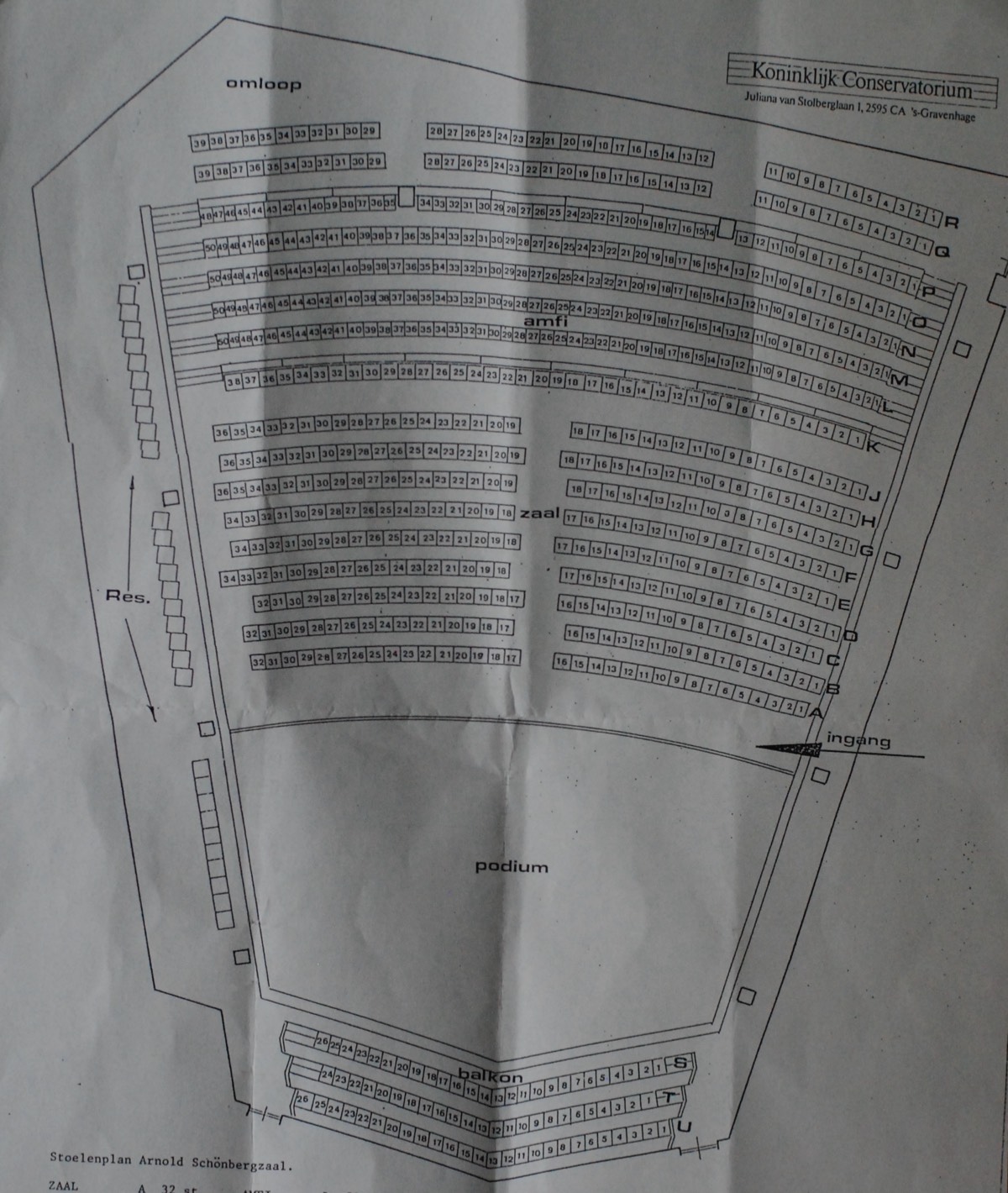
7 December 2021
One Hundred Loudspeakers
It was in December 2021. For the occasion of the very last concerts organized by Sonology in the building that used to house the Royal Conservatoire, and specifically in its concert hall named Arnold Schoenbergzaal, I wished to contribute with something befitting this final salute. One idea I had been considering for a while, was incorporating the loudspeakers of all the mobile phones that the audience would bring.
The first experiments with creating varying sound densities through the use of mobile phone speakers had been in the context of a research into Dick Raaijmakers’ composition Canon-1, for which I used the mobile app PdParty on a relatively small number of devices. Since for this performance such an approach was not going to be a very practical one, I took the step to plunge into webaudio.
The main consideration was, what to do with the about one hundred loudspeakers that I expected to show up. As mentioned, dealing with varying densities created through multiple agents, was something I was somewhat familiar with. However, what the result was going to be when a hundred loudspeakers would be incorporated, was something difficult to estimate. So there was a lot of guessing in what I tried.
Following up on the experiments in the context of Canon-1, the first thing I attempted to implement was accelerating or decelerating impulse structures. Such structures were reminiscent of Stockhausen’s ideas in his work Kontakte. Since web audio requires interaction in order to activate sound playback, I opted for a simple button that would trigger such a structure, followed by a silence before the button would become active again.
This type of interaction made it possible to define in the script a pseudo score based on progress measured since the first button press. A number of parameters defining the characteristics of the pulse structure, would change over time, altering the overal sound result. This strategy became the procedure for three additional structures introducing respectively Raaijmakers’ double-pulse, voice simulation using a Vosim generator and clusters of slightly detuned sine waves.
In a more recent version, I incorporated a basic idea of remotely interacting with parameters, improving the concept of defining a score. In addition, such interaction allows for enabling all devices simultaneously, creating a somewhat synchronized start. Something else I have tested, is synchronizing events based on the clock settings. Since each device connects to the internet, querying the exact time is straightforward. The rest is simple mathematics.
There exists no sound recording of this peace. If you have interest in performing One Hundred Loudspeakers, please contact me.

